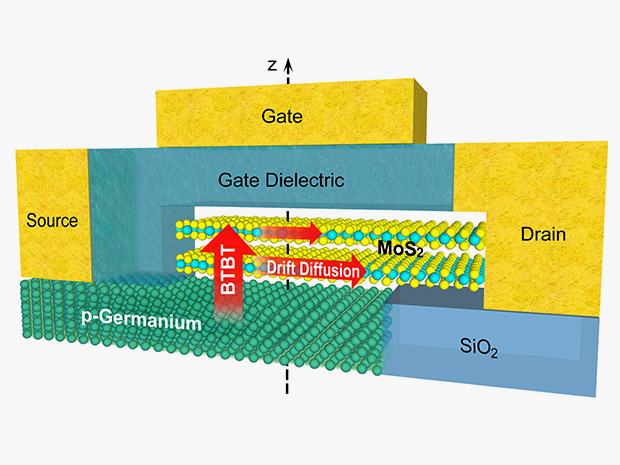
Schematic diagram illustrating the cross-sectional view of the ATLAS-TFET with ultra-thin bilayer MoS2 (1.3 nm) as the channel and degenerately doped p-type Ge as the source. Path for electron transport is shown by the red arrows, which run vertically (indicating band-to-band-tunnelling, BTBT) from the Ge source to the MoS2 and then laterally through the MoS2 layers (via drift diffusion) to the drain. As the Ge is highly doped, the tunnelling barrier height is mainly determined by the effective band overlap between Ge and MoS2 while the tunnelling width is determined by the MoS2 thickness (including the van der Waals gap).